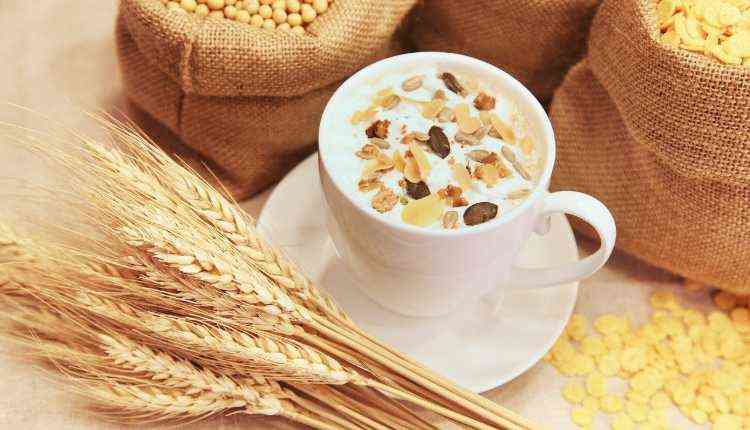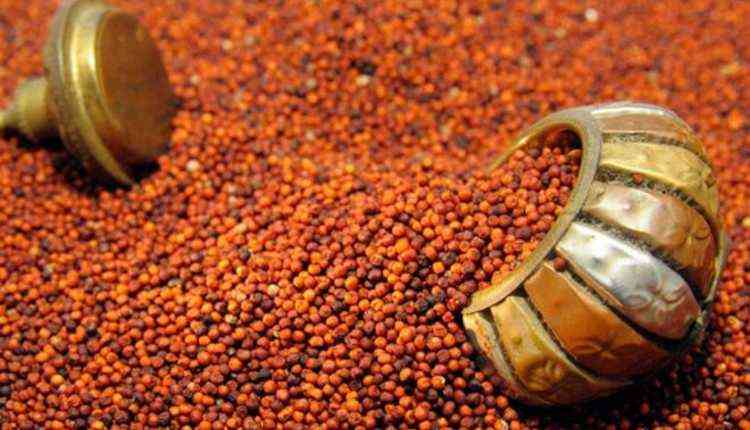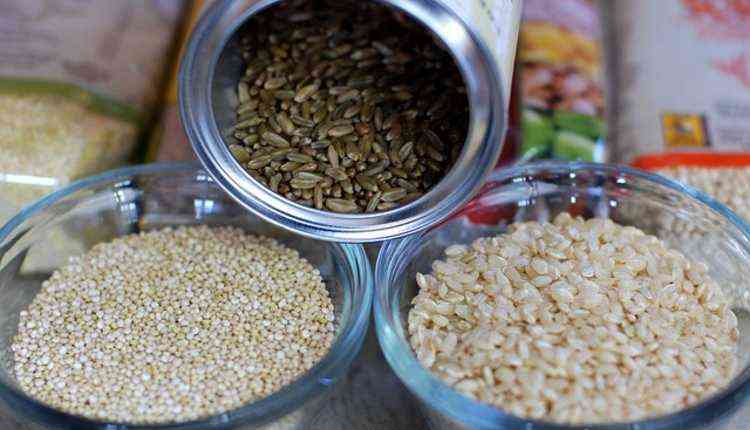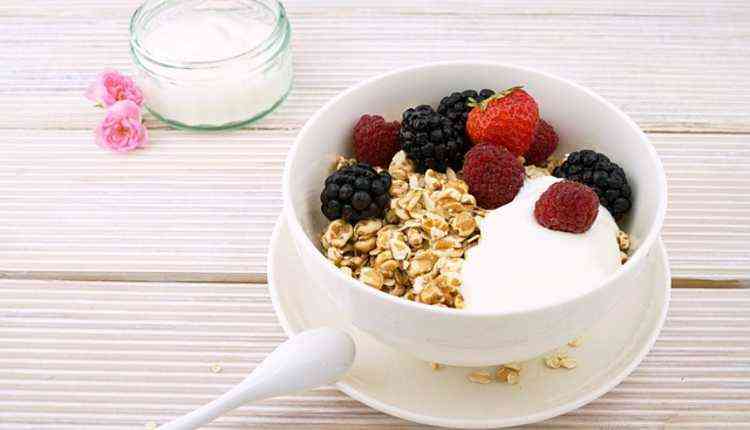Obesity and diabetes have become common health problems worldwide where eating healthy and in a proper quantity is sufficient to lose weight from a diet point of view. No doubt, this should be supplemented with exercise and sufficient intake of water. When it comes to healthy eating, grains top the list.
The Fibre-rich whole grain makes us fill full for a long time and reduces the chances of cravings which are the hidden cause of weight grain.
The 7 Best Healthy Indian Grains For Weight Loss are:
1. Quinoa
Quinoa is a grain grown in South America. It is nowadays becoming more popular in India. Quinoa is accepted as a superfood due to its gluten-free protein and high fibre content. It is also grown in India in lands with less water. It has anti-cancer, anti-ageing and antiseptic properties which help in protection from various diseases like BP, anaemia and osteoporosis. The intake of quinoa is done at breakfast. It is easy to digest and prevent blotting. It is useful in weight loss due to its high protein and fibre.
Quinoa is an important source of amino acid, which makes it an excellent remedy for protein deficiency. The iron, protein and calcium fibres are found abundantly in quinoa which makes it a superfood. It prevents the formation of excess fat in the body, thus reducing the weight. It also regulates blood sugar level, thus making it a healthy food for diabetic people. The fibre in quinoa reduces the cholesterol level and also increases the acid secretion if liver.
The regular intake of quinoa also makes our teeth and bones healthy and strong. The antiseptic and anti-inflammatory property of quinoa helps in the natural tightening of the skin. The high level of vitamin B12, protein and iron present in quinoa helps our body to fight anaemia and keep proper functioning of the body. You might also be interested in How To Maintain Hygiene In Winter For A Healthy Lifestyle?
2. Ragi or Finger millet
Ragi is also known as finger millet or Nachani. It is a type of grain grown basically in dry regions of Asia and Africa. It is efficient to grow at higher altitudes. It can be grown up to a height of 2300 meters in Himalaya. In India, it is grown popularly in South India, Maharashtra and Goa. It has a very excellent shelf life, and the grain is rarely affected by any crop disease, and hence it is not required to spraying of any insecticides. Ragi is filled with various nutritional content which makes it energy-rich food. It is an excellent source of amino acid, which makes it superior to many starches containing food items.
Nowadays, everyone right from a toddler to an older person is suffering from calcium deficiency. Including ragi in our daily diet in the form of porridge or Dalia can substantially increase the calcium levels this making our bones strong. It also helps in weight loss as it’s content fewer fats. Replacing Ragi recipes with regular roti or rice can help in reducing weight. It contents an amino acid called tryptophan which reduces our hunger without feeling starved. It is suggested to have Ragi as our first meal of the day as it will keep us full and restrict cravings.
The high level of fibres and polyphenol reduces blood sugar level. Sprouted Ragi contains high iron levels and increased Vitamin C level, which reduces the risk of anaemia. The amino acid presents in Ragi removes the excess fats, thus reducing cholesterol level. Also, the threonine amino acid present in it prevents the liver from producing excess fats. Ragi also helps in regular functioning and increasing immunity of the body. It is believed that Ragi helps in better digestion, so it is an excellent option for babies as their first food after detaching from breast milk. The antioxidant property of Ragi reduces stress level, enables sound sleep and helps in leading a tension free life. Also, see Bacterial Blessings: Bacteria That Have Been Helping Us In Many Ways.
3. Barley
Barley is the most anciently cultivated grain. It belongs to the Grass family. In India, barley has been eaten as a staple food since ancient times. The Rishi – Munis used to eat Barley as their main food. According to Vedas, not a single “Havan” was completed without an offering of Barley. It is used for “Pujas” performed in marriages and festivals.
Barley is more nutritious as compared to wheat. It is definitely a better option to make chapatti instead of wheat. Barley has an excellent level of zinc, magnesium, potassium and protein. The barley floor helps in increasing the body’s immunity to fight with diseases. Unlike wheat, it is gluten-free and hence easy to digest. Regular use of Barley can help prevent many diseases. Barley has high fibre, so we feel full after eating fibrous food, and fewer calories are produced in the body. Intake of barley water helps in excretion of toxins and detoxifies the body and keeps it hydrated.
Barley is found in two forms, one is in covered forms and the other in seed form. Both forms are used for eating. The Beta-glucans found in Barley helps in reducing obesity and the risk of diabetes and stroke. Barley has low traces of sodium, which keeps the blood pressure in control and fibre present in it maintains the cholesterol level. It has the perfect level of calcium and iron, which prevents bone disease and keeps the bones strong and functional for a long time. The selenium mineral present in Barley is very useful in treating cancer. It prevents multiplication and spreading of cancer cells and also stops the growth of the benign tumour and its conversion in a malignant tumour. It is especially beneficial for colon cancer. Daily intake of Barley prevents insomnia, improves digestion and keeps skin beautiful.
4. Brown Rice
Brown rice is covered form of rice. It is less polished and has vital nutrients essential for brain development. It requires more time to cook than white rice. Brown rice is a complete edible grain rich in vitamin B and magnesium. It is a good source of dietary fibre and phytonutrients.
Brown rice has high fibre as compared to white rice. From the health point of view also, it is believed that brown rice is more beneficial than white rice. In almost all parts of India, rice is eaten as favourite and staple food. But health-conscious people have the fear of weight gain by eating rice. Rice has high calories, so people avoid eating rice especially those suffering from diabetes and for such people brown rice is a better option.
Brown rice has comparatively low calories but high fibres which improves metabolism. Brown rice has selenium which reduces the risk of colon cancer. The high amount of fibre present in brown rice stimulates the chemicals which stops the formation of cancer cells. Intake of brown rice, especially by females of higher age, increases the level of enterolactone which reduces the risk of breast cancer.
The oil found in ground brown rice is known to reduce the cholesterol level. The presence of fibre and phytonutrients prevents the risk of heart diseases, reduces blood pressure and also prevents blockage of arteries. Brown rice controls the calories thus making us feel full for a long time. By eating brown rice we can reduce the chance of overeating. It also helps in digestion and easy movement of bowels thus reducing constipation.
Brown rice has a low glycemic index which regulates the levels the blood sugar of type 2 diabetes. It is a rich source of magnesium which is very useful in the strengthening of bones. Magnesium also absorbs calcium which is essential for healthy bones. The sufficient amount of manganese found in brown rice increases the secretion of fatty acids and hormones. Vitamin D found in brown rice stimulates the function of the brain, improves the nervous system and prevents the brain from oxidative damage.
5. Oats
The scientific name of oats is Avena Sativa and it belongs to the Poaceae family. The intake of oats is done mainly in breakfast. The cultivation of oats was done initially in Scotland but today oats are used and consumed in almost all countries. Daily intake of oats helps us to stay healthy and get rid of many diseases.
Oats is a rich source of soluble fibres. fibres contain β gluconate which reduces the glycemic effect and induces the effect of insulin. This controls the blood sugar level. The soluble fibres present in oats also reduce systolic and diastolic blood pressure. Thus oats prove to be an excellent diet for a person suffering from diabetes and blood pressure.
The β gluconate improves the digestion and maintains the energy level of the body which in turns controls hunger and cravings thus making it useful in weight loss. The fibrous nature of oats is also helpful in reducing the cholesterol levels in the body thus protecting us from heart-related diseases.
Oats are also very beneficial in fighting cancer. The anti-inflammatory properties of oats reduce the multiplication of oncogenic cells and maintain the level of healthy cells. Oats contain a high amount of vitamin B-6 which helps in stress reduction. According to one research, it is observed that during the process of digestion, when some soluble fibres come in contact with water they get converted in gel form and causes indigestion. But oats contain insoluble fibres along with soluble fibres which help in easy removal of bowels.
Oats contain a sufficient amount of calcium, magnesium and silicon which keeps the bones healthy. It also contains serotonin which reduces insomnia and helps to have sound sleep. The antioxidant and anti-inflammatory properties of oats help to keep skin healthy. Also, read The Most Common Diseases In India That Have Influenced Millions Of People.
6. Millet
Millet is popularly known as Bajra in Hindi. It is a grain which is cultivated for both human beings and animals. Millet is mainly cultivated in developed countries, but as it can grow in areas with a dry climate and high temperature, it is cultivated in many countries. Millet was cultivated for the very first time in Africa. In India millet is cultivated in Rajasthan, Maharashtra and Gujarat.
Millet is an excellent source of magnesium which makes it a very important grain to reduce blood pressure and especially atherosclerosis. Magnesium also reduces type 2 diabetes by increasing the capacity of insulin and glucose receptor. The potassium content of millet works as a vasodilator which improves blood circulation. Antioxidants present in millet improve digestion and destroys the effect of cancer-producing free radicals.
Millet contains tryptophan which is a type of amino acid. Tryptophan digests very slowly which reduces hunger and makes us feel full for a very long time. Millet contains a high amount of protein, which is very important for healthy hair growth. It is very important to take a sufficient amount of protein to keep hair healthy. Thus intake of millet prevents hair fall and makes hair strong and healthy.
7. Maize
The tempting aroma and lip-smacking taste of buttery, salty and spicy roasted maize is a must while enjoying the monsoon. This deliciously nutritious fibre rich grain is strongly recommended food for weight loss. It is an excellent source of carbohydrate, vitamin-B, vitamin-C and fibre. It has less fat content which helps in reducing obesity. This whole grain is eaten in almost every part of India. It is cultivated in hilly areas of around 2700 meters height. Corn can be eaten in the form of cornflakes along with milk in breakfast. It can also be taken in the form of soups and salads. Even Rotis can be prepared from maize flour thus making it a complete food.
Corn contains phytochemicals which balance the absorption and release of insulin in the body and thus controls diabetes. Sweet corn has a high amount of ferulic acid which helps in fighting cancer. The antioxidant properties found in maize neutralizes the free radicals found in the body and reduces oxidation.
Intake of corn my pregnant woman is very beneficial. The folic acid and vitamin B present in corn prevent the baby from neural tube defect. Corn has a low amount of fat and a high amount of insoluble fibre. Intake of corn makes us feel full and prevents the accumulation of fats and thus helps in weight loss. Insoluble fibres also improve digestion. Corn has high levels of iron which helps in the formation of RBCs and reduces the risk of anaemia.
Corn has a good amount of thymine which helps in increasing the cognitive function and helps in reducing the risk of Alzheimer. Yellow corn has carotenoid which reduces the risk of macular degeneration which has a direct effect on eyesight. Thus intake of corn increases the vision capacity.
Sweet corn has carotenoid and bioflavonoid which reduce the cholesterol level and increases blood circulation. It helps to keep the heart-healthy. Corn oil has an antiatherogenic effect which reduces the saturation of cholesterol.








